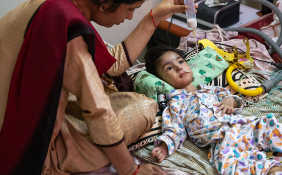Uttrakhand Forest Department Establishes Mahabharata Vatika
The Uttarakhand Forest Department has established two gardens in Haldwani, showcasing plant species referenced in ancient Indian epics. These gardens, named Ramayana Vatika and Mahabharata Vatika, aim to highlight the ecological wisdom embedded in these texts.
Mahabharata Vatika Overview
Mahabharata Vatika spans one acre and features 37 plant species mentioned in the epic. Chief Conservator of Forests Sanjeev Chaturvedi emphasised the research behind selecting these species. The garden features important plant species such as:
Ecological Significance
The garden puts stress on the importance of forests as depicted in the Mahabharata. It references the Vana Parva, which discusses tree planting and wildlife conservation. The epic highlights the mutual dependence of tigers and forests, a concept vital to contemporary conservation efforts.
Cultural Connections
Chaturvedi brought into light that the Mahabharata teaches the spiritual significance of planting trees. He mentioned Bhishma’s advice to Yudhishthira about the legacy of tree planting, connecting ancestors and descendants. This wisdom reinforces the cultural importance of environmental stewardship.
Ramayana Vatika Overview
Ramayana Vatika features around 70 species associated with Lord Rama, drawn from approximately 139 species mentioned in Valmiki’s Ramayana. The garden highlights the association of plants with Lord Ram’s journey, with species linked to various forests like Chitrakoot (tropical deciduous), Dandakarnanya (tropical), Panchavati (tropical dry), and Kishkindha (moist deciduous), as well as Ashok Vatika and Dronagiri (associated with Sita and Hanuman).
Cultural Connections
Chaturvedi brought into light that the Mahabharata teaches the spiritual significance of planting trees. He mentioned Bhishma’s advice to Yudhishthira about the legacy of tree planting, connecting ancestors and descendants. This wisdom reinforces the cultural importance of environmental stewardship.
Ramayana Vatika Overview
Ramayana Vatika features around 70 species associated with Lord Rama, drawn from approximately 139 species mentioned in Valmiki’s Ramayana. The garden highlights the association of plants with Lord Ram’s journey, with species linked to various forests like Chitrakoot (tropical deciduous), Dandakarnanya (tropical), Panchavati (tropical dry), and Kishkindha (moist deciduous), as well as Ashok Vatika and Dronagiri (associated with Sita and Hanuman).
#Biology #LifeScience #Genetics #Ecosystem #CellBiology #Evolution #BiologicalResearch #Biodiversity #Anatomy #MolecularBiology
Website Link : cellbiologist.org
Nomination Link : cellbiologist.org/award-nomination/?ecategory=Awards&rcategory=Awardee Contact Us: contact@cellbiologist.org
Follow Us On :
Twitter : twitter.com/account/access
Linkedin : .linkedin.com/in/research-scholar-10278a323/
Tumblr ; tumblr.com/



Comments
Post a Comment